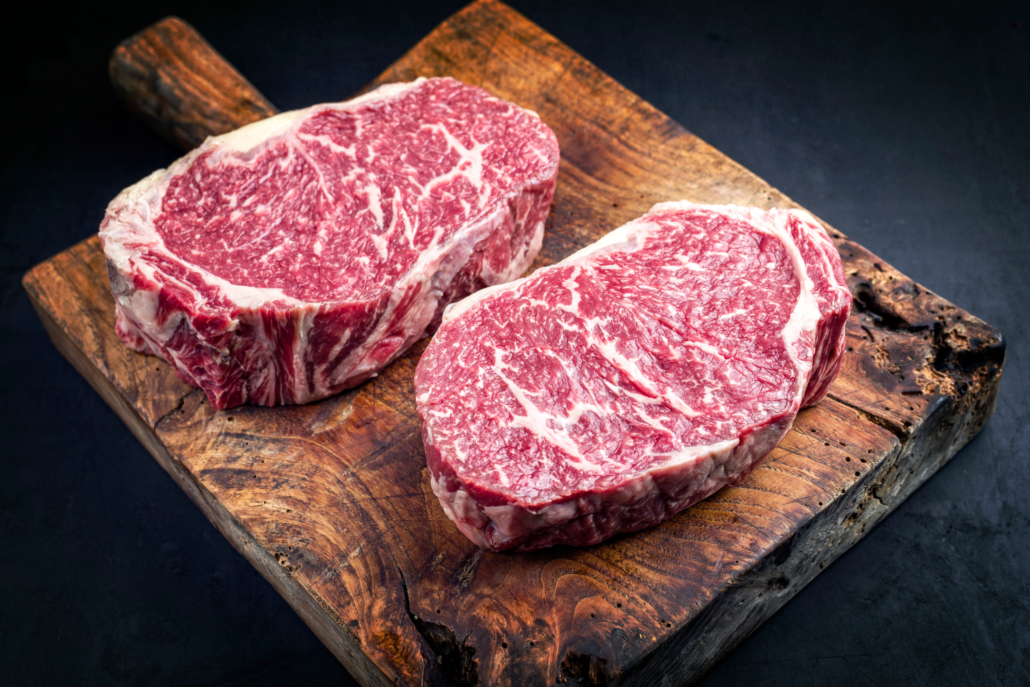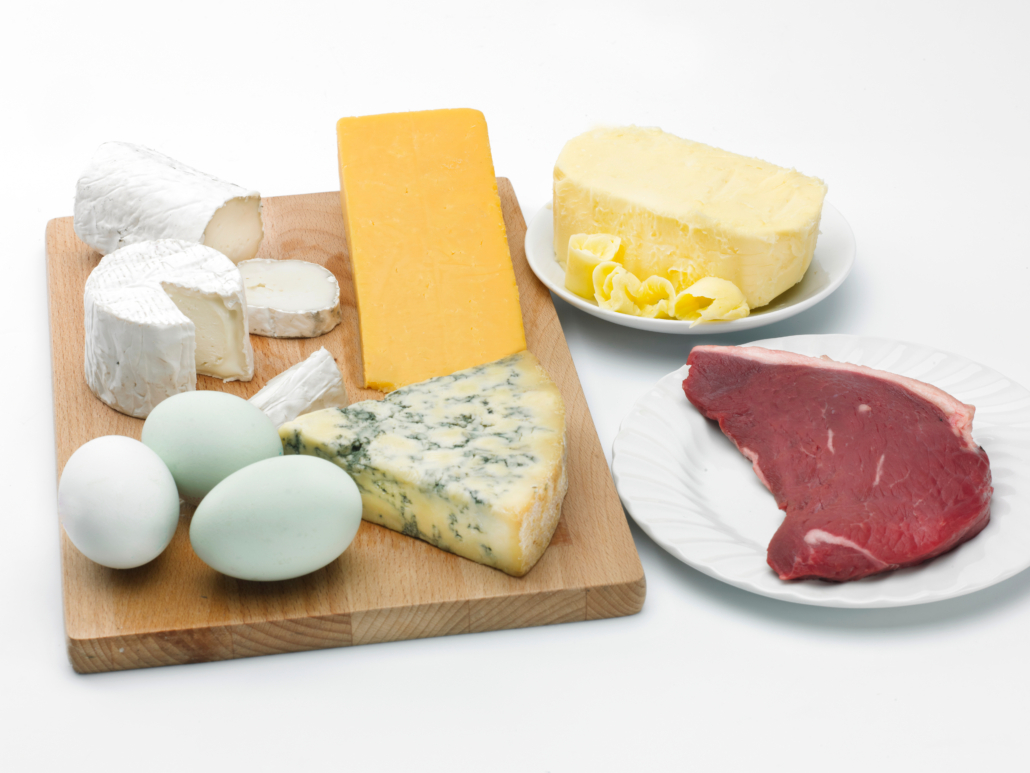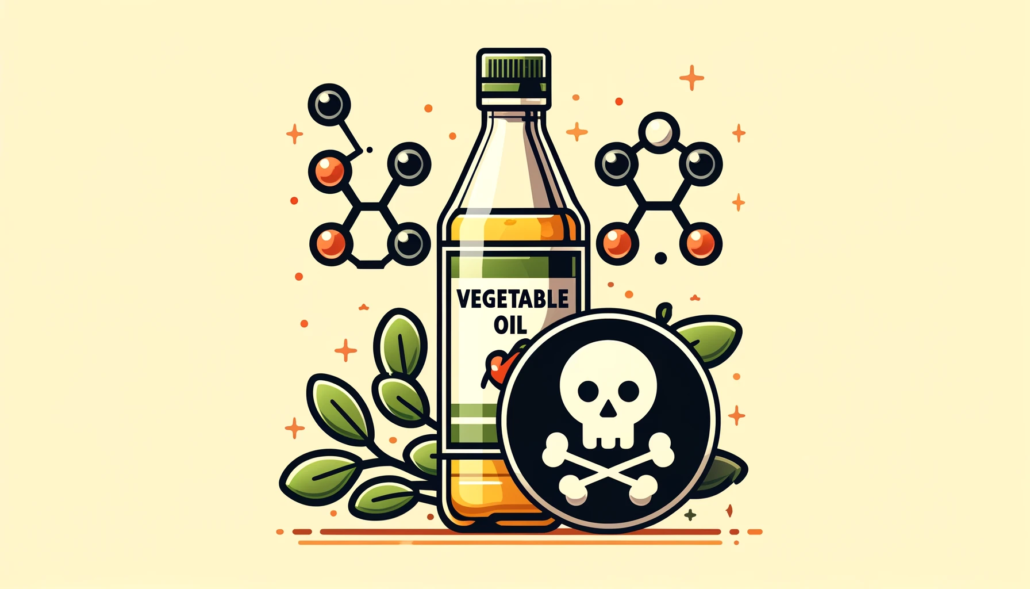We include products in articles we think are useful for our readers. If you buy products or services through links on our website, we may earn a small commission.
What is the Healthiest Red Meat?
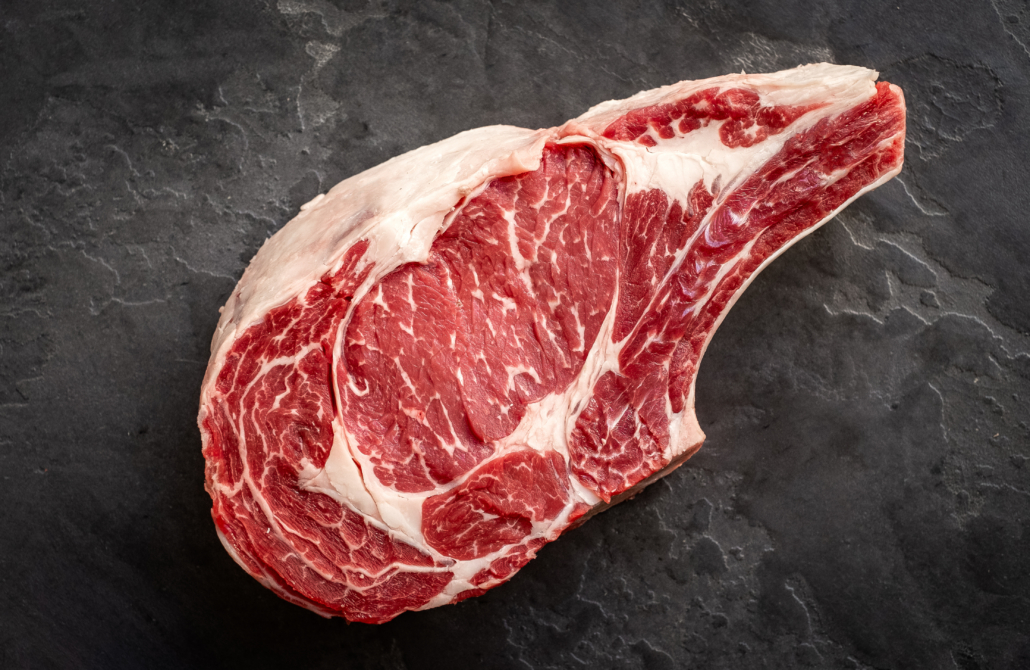
Though red meat has been targeted since the 1960s as a speculative factor in heart disease and cancer, modern studies have finally set red meat free from the anti-meat dogma.
To be clear, there are exactly zero randomized control trials linking fresh red meat with heart disease and all forms of cancer.
But we’re still recovering from the damage that the unfounded suspicion of red meat has caused. You’re probably familiar with headlines and mainstream nutritionists warning against too much red meat.
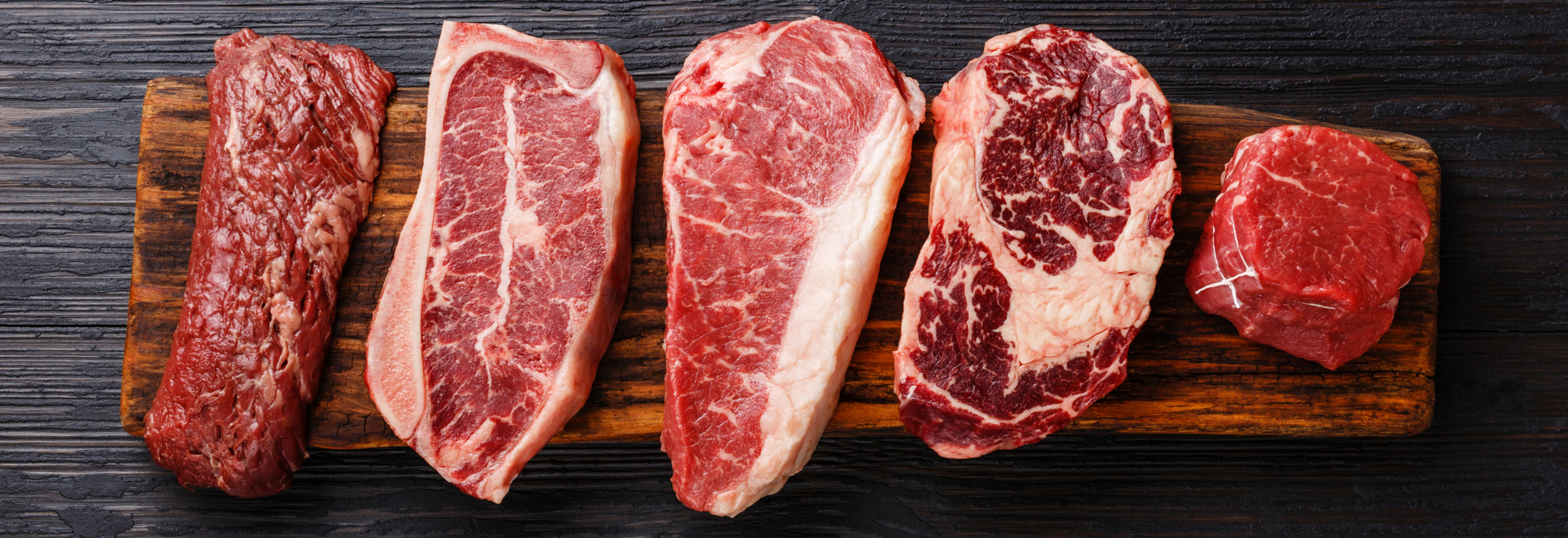
Thanks to numerous modern studies, the truth is emerging that there is no scientific basis for fearing red meat. On the contrary, eliminating red meat may be detrimental to our health. This is especially true when we replace red meat with toxic vegetable oils and high-carb, processed plant-based foods.
In fact, modern nutritional science now considers red meat a healthy whole food that provides a complex matrix of essential and meat-specific nutrients.
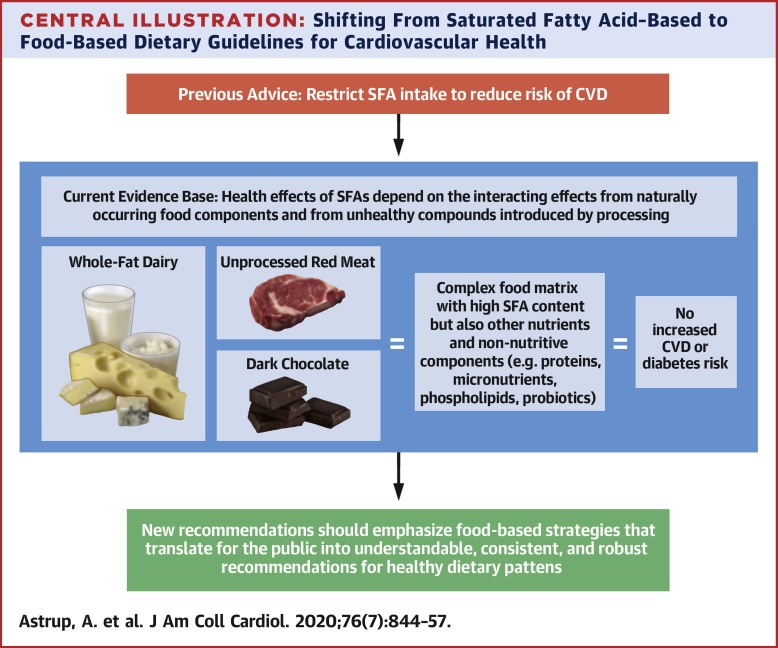
Better to be a couple of million years too late to the party than miss it entirely. Modern research suggests that humans have been hyper-carnivores for most of our time on earth. Only recently in the scheme of things has our species adopted lower-quality plant foods.
In this article, we’ll run through some of the modern science clearing red meat of outdated health concerns, and offer a list of the healthiest red meats to sink your teeth into.
Table of Contents
Red vs White Meat
The red meat vs. white meat debate is based on categories that are inconsistent, confusing, and not based on the presence of any single or collection of nutrients.
Some scientists designate red meat by pH levels, while in other sources red meat is classified based on the presence of a protein called myoglobin. When the iron in myoglobin combines with oxygen it causes tissues to exhibit a red color.
Officially the USDA classifies red meat as the meat of mammals. However, some cuts of duck and chicken can be redder than pork. And there’s no consistent concentration of macro or micronutrients that would designate meat as red rather than white. This calls into question the entire history of demonizing red meat and promoting so-called white meat.
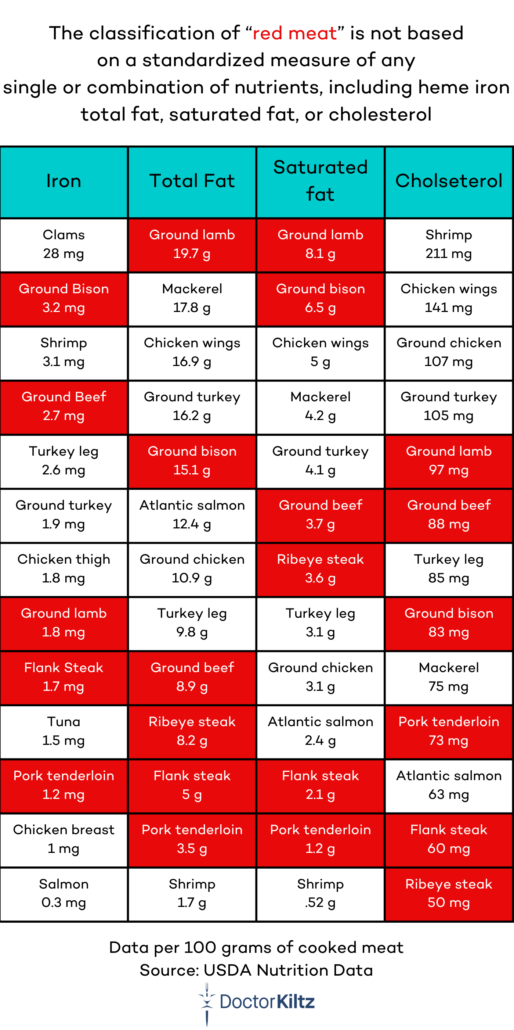
Source: Foodandnutrition.com
In any case, the standard red meat list includes
- Beef
- Veal (young cow)
- Bison/Buffalo
- Lamb (young sheep)
- Mutton (adult sheep)
- Pork (including sausages and bacon)
- Venison
- Goat
- Boar
- Elk
What the Science Says about Health Risks and Benefits of Red Meat
Before launching into our science-based list of the healthiest red meats, let’s review what modern science says about red meat and your health:
- For most people fresh red meat is loaded with bioavailable and meat-specific nutrients that are associated with numerous markers of health, fertility, and longevity
- Reducing fresh red meat has no impact on incidences of breast, colorectal, esophageal, gastric, pancreatic, and prostate cancer 3
- Total meat consumption correlates to greater life expectancy, independent of the effects of economic status, urban advantages, obesity, and total caloric intake
- Saturated fat when consumed as part of a matrix of whole foods including fresh meat, is healthy for most people
- Saturated fat does not cause heart disease, and eating red meat is not associated with heart disease
- Randomized control trials comparing low-carb diets high in red meat with vegetarian diets show dramatically better results for high-meat diets regarding cardiovascular health, weight loss, and blood sugar regulation
- Meat raised with “regenerative agricultural practices” and “carbon farming” sequesters carbon while increasing the health of our soils. This is crucial when considering that our topsoil is on tract to be depleted by industrial farming in 60 years
Benefits of Red Meat
The nutrients provided by red meat support numerous physiological functions, including:
- Healthy fertility
- Energy production
- Anti-aging
- Gene expression
- Mental health
- Cognitive ability
- Immune function
Now on to our list of healthiest red meat
1. Ribeye and Other Fatty Cuts of Steak
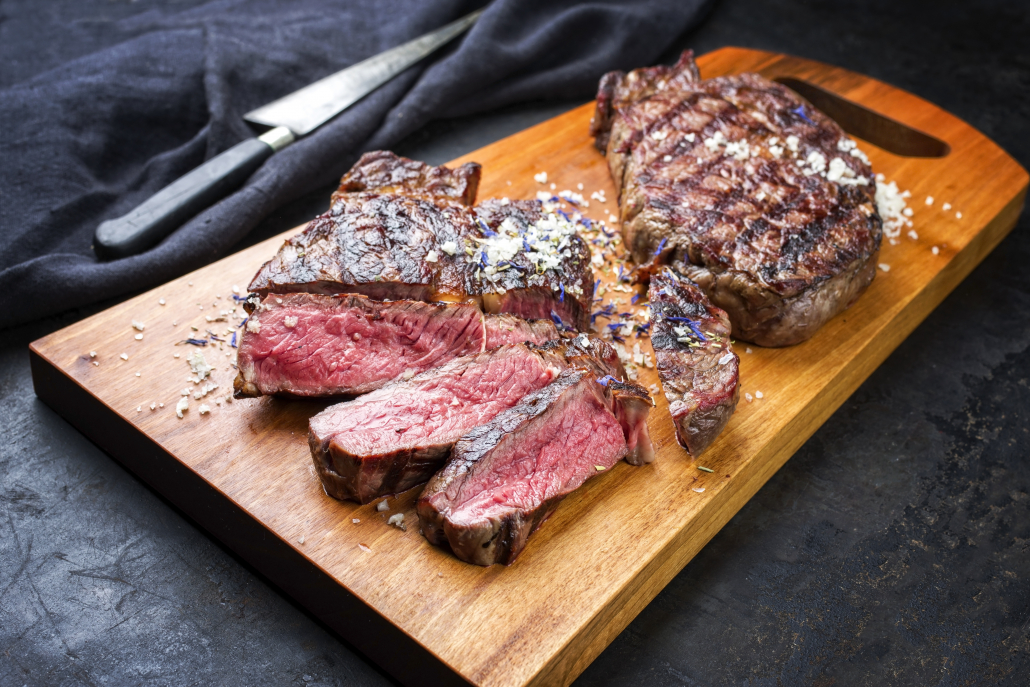
Fatty cuts of steak like ribeye and new york strip are succulent, delicious, and abundant in both macro and micronutrients.
In fact, ribeye and other fatty cuts of steak are nutrient-dense that it’s entirely possible to thrive on a diet of ribeye, salt, and water. This approach to carnivore eating is called the lion diet and was popularized by psychologist Jordan Peterson.
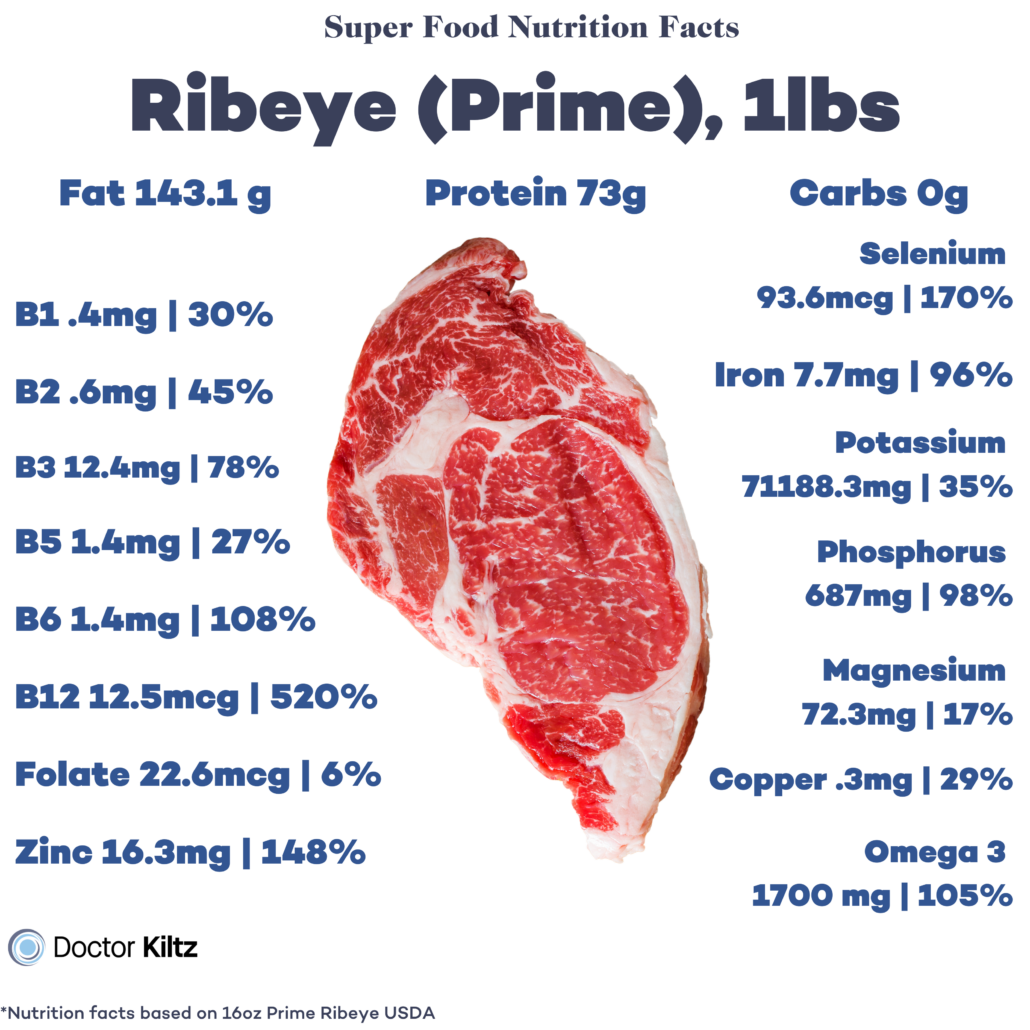
Dr. Shawn Baker is another high-profile proponent of this elimination approach to dietary health.
So what makes ribeye so healthy? Let’s start with the fats.
Ribeye is loaded with monounsaturated fatty acids, accounting for ⅓ of its total fat. Monounsaturated fat has been shown to be anti-inflammatory and can reduce the risk of heart disease.
In addition to healthy fats, complete proteins, B vitamins, zinc, and selenium, ribeye also provides numerous nutrients that you won’t find on the nutritional labels
- Carnitine: boosts male fertility, and supports cellular energy production and heart health
- Taurine: Antioxidant that protects against glycation, and oxidative stress, and supports mental health while reducing symptoms of depression
- Carnosine: Reduces glycation and protects telomeres thereby providing anti-aging effects
- Creatine: supports cognition, heart health, and improved athletic performance, while protecting against neurological decline t
| NUTRIENT | 227G (8 OZ) | |
| Calories | 560 cal | |
| Fat | 34g | |
| Saturated Fat | 12g | |
| Monounsaturated Fat | 12g | |
| Carbs | 0 | |
| Protein | 65g | |
| Vitamins | ||
| B1 (Thiamin) | 25% | |
| B2 (Riboflavin) | 23% | |
| B3 (Niacin) | 119% | |
| B5 (Pantothenic Acid) | 30% | |
| B6 | 100% | |
| B9 (Folate) | 7% | |
| B12 | 142% | |
| Vitamin D | 70% | |
| Vitamin E | 7% | |
| Choline | 70% | |
| Minerals | ||
| Magnesium | 12% | |
| Potassium | 14% | |
| Iron | 31% | |
| Copper | 33% | |
| Phosphorus | 42% | |
| Selenium | 131% | |
| Zinc | 111% |
2. Lamb
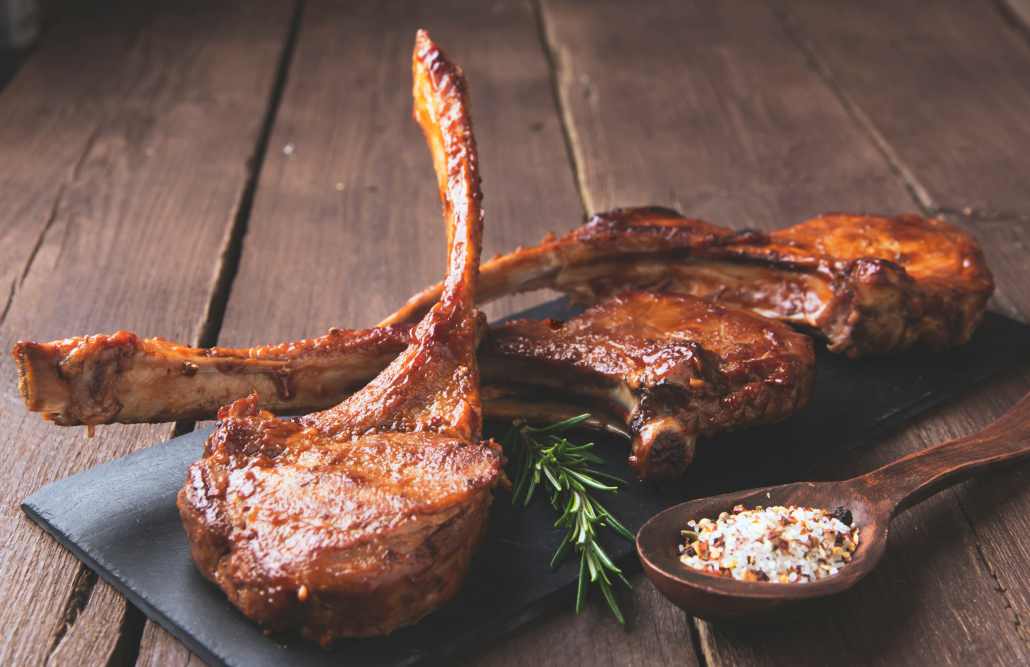
Any discussion of lamb starts with the fact that Lamb provides more of the healthy fat called conjugated linoleic acid (CLA) than any other food.
Lamb offers between 4 – 19.0 mg CLA per gram of fat. Beef typically contains 1.2 – 4.0 mg. And pork and poultry provide less than 1.0 mg.
- supports immune function
- strengthens bones
- supports heart health
- improves excess fat loss
The CLA in lamb and other red meats has also been shown to be a powerful anticarcinogen that can stop the growth of cancer and tumors in the stomach, prostate, breast, and liver.
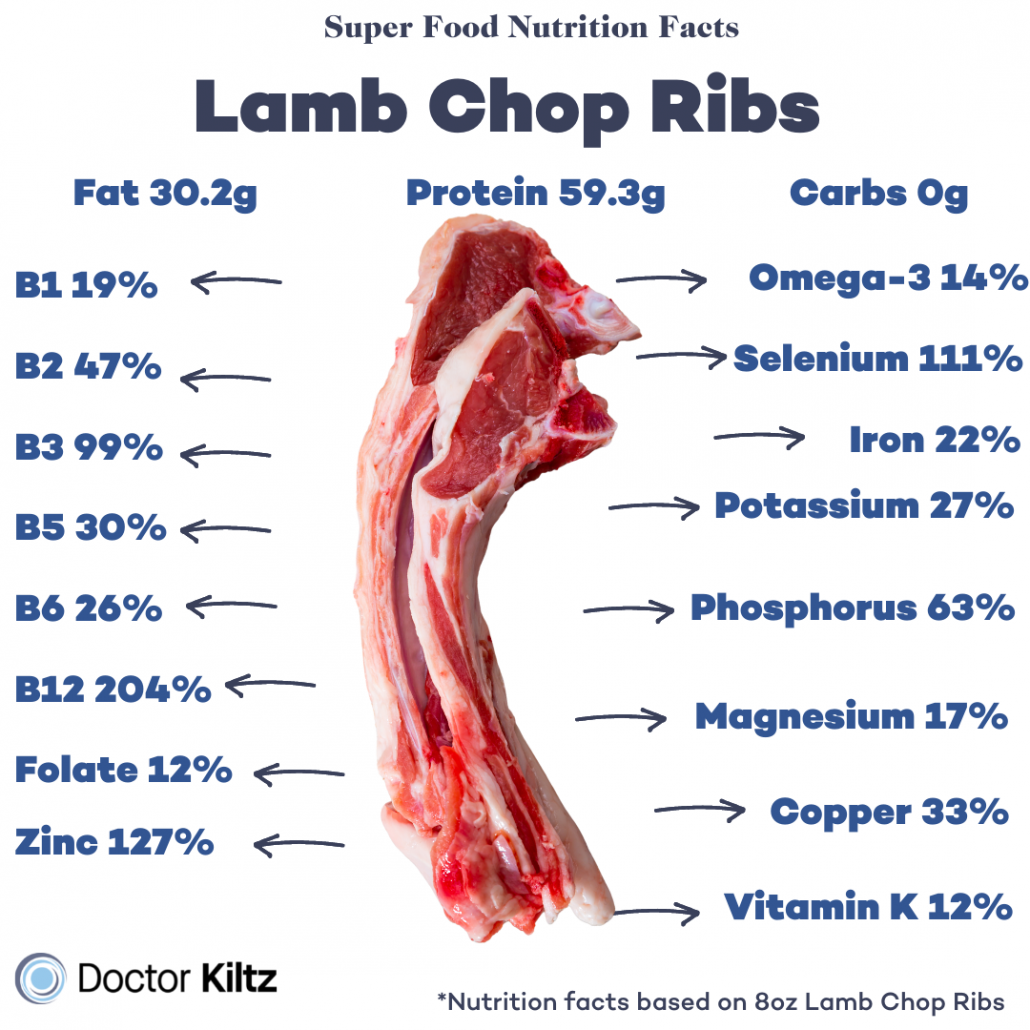
Lamb is also high in a powerful antioxidant called glutathione. Glutathione has been shown to benefit our health in various ways, including
- reducing insulin resistance
- Reducing oxidative damage in children with autism
- Reducing the risk of autoimmune diseases
- Reducing the severity of symptoms of Parkinson’s disease
As an abundant source of many essential nutrients, a serving of lamb chops provides at least 100% of your recommended intake of B12 and B3 vitamins.
| Lamb Chops/Rack | ||
| Nutrients per 7 oz | Amount | % RDA |
| Fat | 24g | |
| Saturated Fat | 18g | |
| Trans Fat (CLA) | 2.7g | |
| Protein | 55g | |
| B12 | 144% | |
| B3 | 112% | |
| B6 | 92% | |
| B2 (RIboflavin) | 56% | |
| B5 | 26% | |
| B1 | 26% | |
| Selenium | 56% | |
| Zinc | 46% | |
| Phosphorus | 44% | |
| Copper | 30% | |
| Iron | 26% |
3. Beef Liver
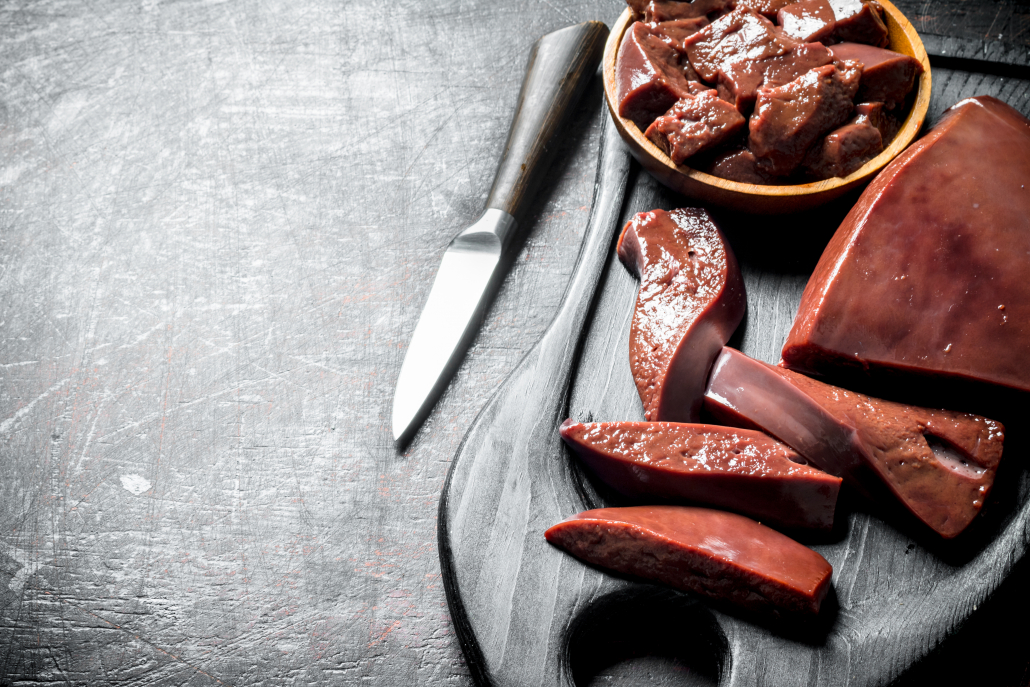
Often overlooked in our modern diet where red meat generally means muscle meat, beef liver is actually the king of nutrient-density. It’s so loaded in vitamins and minerals that it is often called nature’s multivitamin. And unlike synthetic multivitamins, the nutrients in beef liver are highly bioavailable.
Beef liver is not just one of the healthiest red meats, but one of the healthiest foods you can eat, period.
Vitamin A
A 3.5 serving of beef liver provides around 552% RDV of your vitamin A.
This highly useable form of vitamin A (retinol) helps support healthy skin, vision, physical growth, and fertility.
And don’t be fooled by vitamin A in plant foods like carrots. Only a small percentage of this plant vitamin A “precursor” is absorbed by the body. And 45% of people aren’t able to convert any of it!
B Vitamins and Copper
Beef liver is also one of the most abundant sources of vitamin B12 with over 2000% of your RDV per serving. Combined with 488% of your RDV of copper, liver helps maintain blood vessels, bone health, nerve function, and immune function.
Nucleic Acids
You won’t find nucleic acids on a nutritional label, but these nutrients are essential to many important physiological processes including[
- Immune function
- Digestion
- Muscle recovery
- Reduced inflammation
- Reduced oxidative stress
- Proper metabolism
Enzymes
Liver contains numerous organ-specific enzymes. For example, cytochrome P450 supports hormone production, detoxification, and the healthy functioning of your own liver.
| Beef Liver | ||
| Based on 100 grams | ||
| Calories | 135 | |
| Fat | 3.6g | |
| Protein | 20.4g | |
| Net Carbs | 3.9g | |
| Vitamins | %Daily Value | |
| Vitamin A Vitamin B6 Vitamin B12 Thiamine Riboflavin Niacin Folate Choline Vitamin C Vitamin D Vitamin K | 4968μg 1mg 59.3μg 0.2mg 2.8mg 13.2mg 290μg 333.3mg 1.3mg 1.2μg 3.1μg | 552% 84% 2471% 13% 163% 66% 73% 61% 3% 8% 3% |
| MINERALS | ||
| Iron Magnesium Phosphorus Zinc Copper Manganese Selenium | 4.9mg18mg 387mg 4mg 9.8mg 0.3mg 39.7μg | 62%6% 39% 27% 488% 16% 57% |
Let’s see how beef liver stacks up to normal muscle meat and popular plant foods.
| APPLE (100 g) | CARROTS (100 g) | RED MEAT (100 g) | BEEF LIVER (100 g) | |
| Calcium | 3.0 mg | 3.3 mg | 11.0 mg | 11.0 mg |
| Phosphorus | 6.0 mg | 31.0 mg | 140.0 mg | 476.0 mg |
| Magnesium | 4.8 mg | 6.2 mg | 15.0 mg | 18.0 mg |
| Potassium | 139.0 mg | 222.0 mg | 370.0 mg | 380.0 mg |
| Iron | .1 mg | .6 mg | 3.3 mg | 8.8 mg |
| Zinc | .05 mg | .3 mg | 4.4 mg | 4.0 mg |
| Copper | .04 mg | .08 mg | .18 mg | 12.0 mg |
| Vitamin A | None | None | 40 IU | 53,400 IU |
| Vitamin D | None | None | Trace | 19 IU |
| Vitamin E | .37 mg | .11 mg | 1.7 mg | .63 mg |
| Vitamin C | 7.0 mg | 6.0 mg | None | 27.0 mg |
| Thiamin | .03 mg | .05 mg | .05 mg | .26 mg |
| Riboflavin | .02 mg | .05 mg | .20 mg | 4.19 mg |
| Niacin | .10 mg | .60 mg | 4.0 mg | 16.5 mg |
| Pantothenic Acid | .11 mg | .19 mg | .42 mg | 8.8 mg |
| Vitamin B6 | .03 mg | .10 mg | .07 mg | .73 mg |
| Folate | 8.0 mcg | 24.0 mcg | 4.0 mcg | 145.0 mcg |
| Biotin | None | .42 mcg | 2.08 mcg | 96.0 mcg |
| Vitamin B12 | None | None | 1.84 mcg | 111.3 mcg |
4. Organ Meats
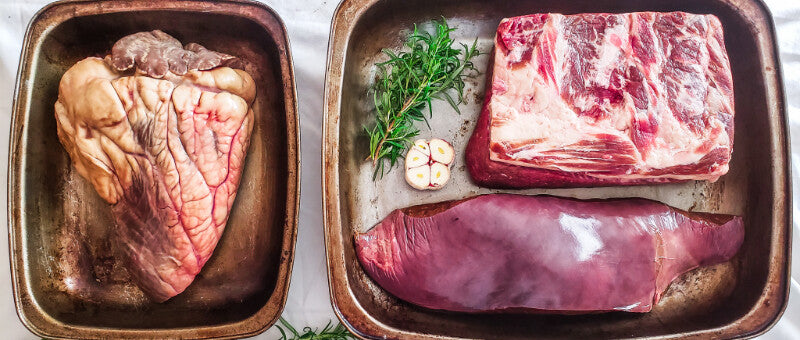
We can’t give beef liver all the glory.
Thanks to the growing trend of nose-to-tail eating, numerous highly nutritious and surprisingly tasty organ meats have found their way onto menus and into our homes.
Here’s a rundown of nutritional highlights for these extremely healthy red meats
Heart
- Heart is nature’s most concentrated source of Co-Enzyme Q10. CoQ10 helps your cells produce energy, reduces fatigue, improves sperm quality, and performs as an antioxidant neutralizing free radicals and reducing oxidative stress
- Beef heart provides heart-specific proteins and nutrients that have been found to boost mood, support immune function, and increase energy
- The DWORF protein found in beef heart may support heart health and contraction strength
Kidney
- Beef, lamb, and pork kidney contains numerous proteins and enzymes that can support your body’s ability to detoxify
- The selenium in kidney can support thyroid functions and promote the production of hormones pregnenolone, progesterone, and DHEA. These hormones are associated with youthfulness and anti-aging
- The fat surrounding the kidneys is it’s 70% saturated and remarkably high in stearic acid. This fatty acid is associated with lower body fat and can activate mitochondria (energy factories) in your cells
- Kidney contains several rare amino acids. The amino acid L-ergothioneine promotes kidney health and reduces risk of preeclampsia
Spleen
- Beef spleen is a robust source of peptides, co-factors, coenzymes, and other beneficial compounds that support immune function and the generation of blood cells
- Two of the most powerful spleen-specific peptides, tuftsin, and splenopentin can stimulate your immune system’s macrophages (infection-fighting white blood cells)
- The proteins and peptides in beef spleen can enhance the activity of your body’s “natural killer” (NK) cells. These cells secrete chemicals that turn on the immunological functions of other cells, promoting effective immune responses
Pancreas
- Pancrease also plays an important role in blood sugar and growth hormone regulation
- Both an exocrine and endocrine organ, the pancreas is critically involved in the absorption of nutrients through the secretion of digestive enzymes
Liver from Duck, Goat, Lamb, Pork, Chicken, and Goat
- Like beef liver, the liver of goat, lamb, pork, chicken, and duck is loaded with a wide spectrum of bioavailable vitamins and minerals
- Only 100grams of duck liver provides 1330% RDV of vitamin A retinol.
- The nutrients in liver can support healthy skin and bones, fertility, cardiovascular function, concentration, memory, positive mood, muscle strength, and physical endurance.
Brain
- Brain from beef, pork, and lamb is high in the omega-3 fatty acid DHA. DHA has been shown to support mood and cognition, provide anti-inflammatory effects, support male and female fertility, and forms the foundation of hormones that regulate blood clotting and the health of arterial walls
- Brain-specific nutrients including sphingomyelin, phosphatidylserine, brain-derived neurotrophic factor (BDNF-1), and varios peptides that may protect the brain and support cognitive health
5. Pork
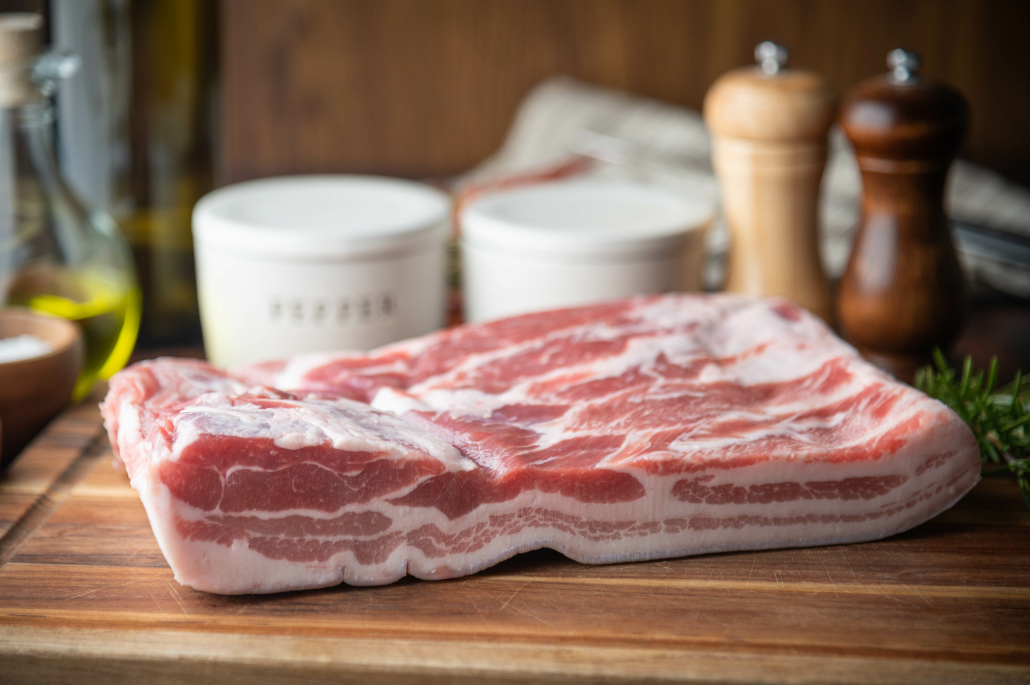
If you’re on a budget, pork is a fantastic red meat that’s surprisingly high in numerous essential and hard-to-get nutrients.
One of the highlights of pork is its abundance of complex amino acids–the building blocks of proteins.
Many common mental disorders like depression, bipolar disorder, schizophrenia, and obsessive-compulsive disorder are associated with amino acid deficiencies.
These amino acids and saturated fats in pork are essential components of the neurotransmitters responsible for mood stabilization.
Additionally, the highly satiating combination of fats and proteins in pork can reduce cravings and feelings of deprivation that drive people to bing on processed junk foods. Resisting junk food binges isn’t just good for your waistline. Studies show that processed foods damage your microbiome resulting in mood swings and anxiety. In this way pork can both nourish and nurture your mental and emotional wellbeing.
Pork is Packed with Nutrients
A typical 3.5-ounce (100-gram) serving of pork belly contains:
- 37 grams of complete proteins
- Vitamins B1, B2, B3, B5, B6, and B12
- 89% of the RDA for selenium
- Bioavailable minerals, including iron, magnesium, zinc, and potassium
- 50% of the fat in pork belly is monounsaturated with a high percentage of “heart-healthy” oleic acid.
| Pork Belly Nutritional Content per 224g | Amount | % RDA |
| Fat | 89g | N/A |
| Saturated Fat | 32g | N/A |
| Monounsaturated Fat | 42g | N/A |
| Polyunsaturated Fat | 9g | N/A |
| Omega 3 ALA | 900mg | 100% |
| Choline | 113mg | 21% |
| Vitamin B12 | 1.8mcg | 75% |
| Pantothenic Acid (B5) | 2.5mg | 50% |
| Niacin (B3) | 9mg | 56% |
| Riboflavin (B2) | .4mg | 32% |
| Thiamin (B1 | .7mg | 56% |
| Copper | .2mg | 22% |
| Phosphorous | 300mg | 24% |
| Selenium | 23mcg | 42% |
| Zinc | 1.7mg | 16% |
| Vitamin D | 1.8mcg | 9% |
| Iron | .9mg | 5% |
Healthiest Red Meats: The Takeaway
Despite decades of misinformation, unfounded suspicion, and downright institutional corruption, modern science is returning red meat to its rightful place as the center of a healthy diet.
Red meat is among the healthiest foods on earth with unparalleled abundance and combination of highly bioavailable macro and micronutrients.
Some of the nutrients provided by this list of healthiest red meat, include
- Complete proteins
- healthy saturated and monounsaturated fatty acids
- essential B vitamins
- immune-boosting zinc
- thyroid supporting selenium
- numerous meat-specific nutrients like carnitine, creatine, and taurine












